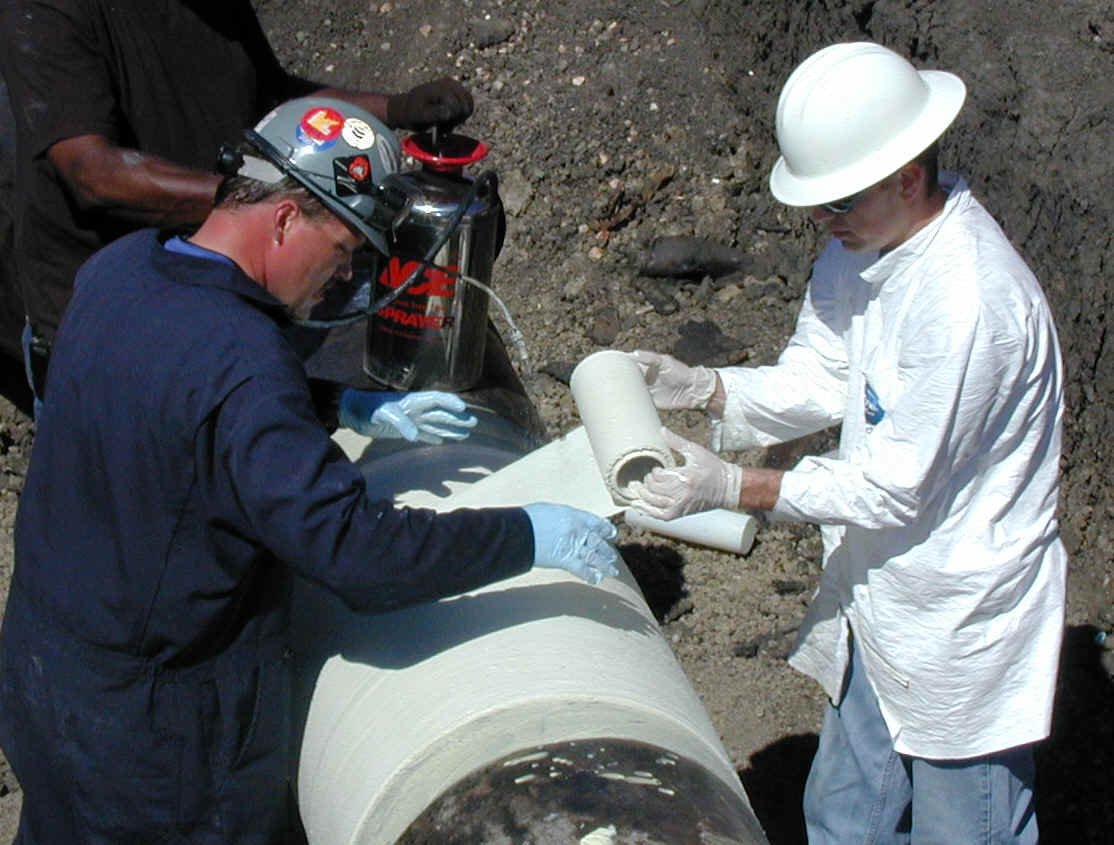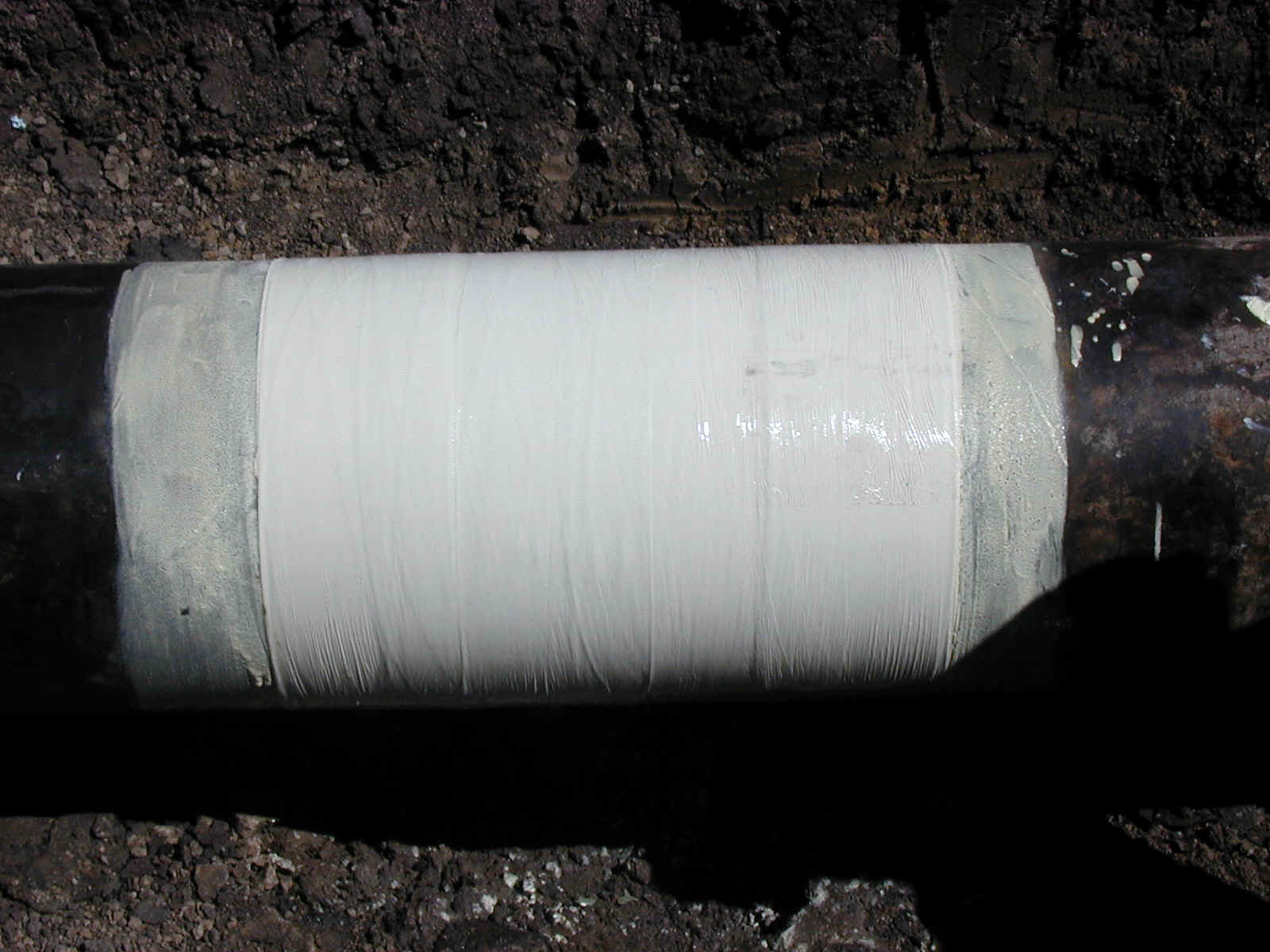|
|
Aquawrap® | ||
|
|
|||
|
|
Externally Corroded Pipeline Corrosion pitting on buried pipelines can be an expensive problem. Thousands of dollars each year are spent repairing, replacing, and protecting pipelines from the damaging effects corrosion can cause. The line shown here was a 24" natural gas line that normally operates upwards of 900 psi. During normal inspection procedures, this section of piping was found to have severe corrosion pitting, nearly 80% wall loss in some areas. This condition required an immediate repair. Aquawrap® was chosen for the repair material. After sandblasting to a NACE No.2/SSPC-SP10 finish, the pitted areas were filled with a high-compressive strength load-transfer compound. This is used to transfer the load of the piping to the composite material as the damaged area reaches its yield point. Our BP-1 Primer System was applied over the entire repair surface to provide an interface between the steel and the composite. When tacky, the installation of Aquawrap® began. Using in-house design calculations, the proper amount of layers were installed to bring the pipeline back to the required strength. When all the layers have been applied, Stricture Banding™ is used to compress and consolidate the installation. This process forces air out of the installation, allowing a solid composite lay-up to be formed. After a 1-hour cure time, the Stricture Banding™ was removed and the line was coated with a standard pipe tape material. Aquawrap® is the perfect solution for quick repairs on DOT regulated pipelines. Click here for more information. Aquawrap® is the simplest, most cost-effective repair you can find. Side Note: Past repair procedures for this pipeline owner required the fabrication of a steel enclosure that could be welded or bolted to the line. Measurements are taken during inspection and the repair part is manufactured off site and then transported the job. If measurements are incorrect, for any reason, the part must be modified. This also holds true for fixed width, non-metallic repair systems. Aquawrap® is flexible and can handle small changes in the job parameters. A good example of this situation occurred on this job. The initial inspection found corrosion to be within a 24" area along the pipe. After sandblasting, more corrosion was found. This brought the corrosion length to 28". If a steel repair sleeve had been made to exacting specifications, which is usually the case, it would have been too short. This would have caused a lost work day for the crew. Keep in mind, the crew probably would have been a welder, welders assistant, safety watch, backhoe operator, and a supervisor. It would have also meant modification of the sleeve. In any case it would have cost the pipeline owner a significant amount of money and a two or three day delay. In contrast, all the Aquawrap® installation crew had to do was have the calculations checked to see if there was enough material to cover that extended area. The requirements were verified and the crew was given the go ahead. The technicians were able to cover the extra four inches while maintaining the layer requirement. |
" " " |
|
|
|
|||
 TM
TM


